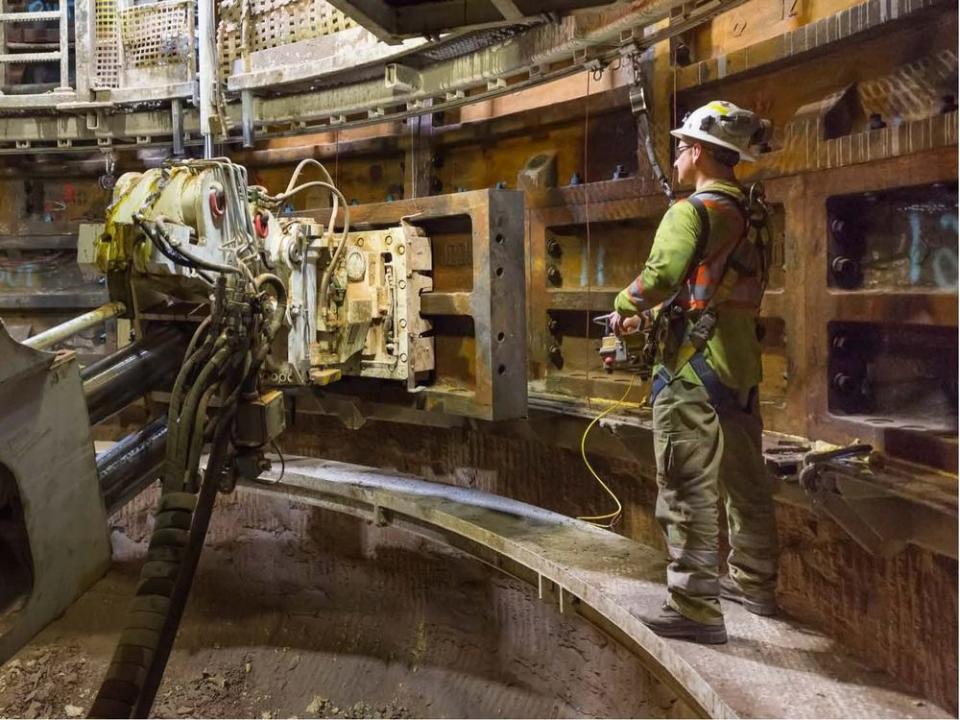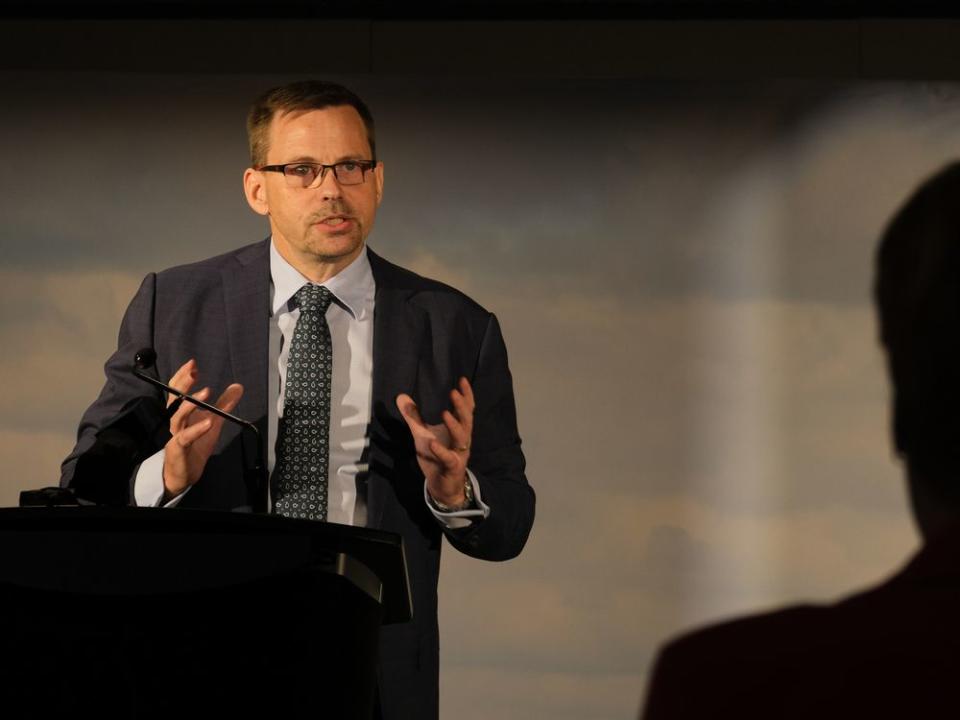BHP to start recruiting hundreds to operate world's largest potash mine in Saskatchewan

Seasons change, and so does the weather, but one thing remains constant in Saskatchewan: BHP Group Ltd. keeps pressing forward with Jansen, a $7.5-billion project 140 kilometres east of Saskatoon that will be the world’s largest potash mine once completed.
With billions of dollars spent in the past decade, the company has already built two mine shafts and is planning for first potash production in 2026.
In 2023, however, Jansen’s workforce will peak, with as many as 2,500 people on site. By the end of the year, BHP hopes to have poured concrete foundations for the mill and other processing and storage facilities, and started to erect steel structures.
More importantly, Rag Udd, BHP’s president of minerals for the Americas, said 2023 is when the company plans to start recruiting roughly 600 people who will operate the mine, with aspirations to draw a large portion of its workforce from the local community.
“We want the workforce to reflect society as a whole,” he said. “We’re aspiring for gender balance and a representative Indigenous workforce of about 20 per cent as well.”
That emphasis on diversity ties into the company’s ambitious plans to build what it characterizes as a modern mine.
In its initial stage, Jansen is expected to produce 4.35 million tonnes of potash per year, and has the potential for four additional expansion stages.
But even that initial tonnage would represent about 20 per cent of the 22 million tonnes that Canada produced in 2021, when it was the world’s largest potash-producing country.
We want the workforce to reflect society as a whole
Rag Udd
Potash is a fertilizer that helps boost crop yields and strengthen plants, and BHP’s chief executive Mike Henry has said the company has kept its eye on it because its strategic importance will increase as the world’s population swells and food supplies tighten.
In addition to using a more representative workforce, BHP has also said the mine will have net-zero emissions. This past June, Henry flew from Australia to Saskatchewan, where Canada’s Industry Minister François-Philippe Champagne joined him and announced the federal government would spend as much as $100 million to help reduce emissions from the mine.
Saskatchewan has the highest emissions per capita in Canada, and its electrical grid remains largely dependent on coal and natural gas, according to the Canada Energy Regulator, so BHP is taking on a challenge.
“It’s important to remember, this is actually the first new underground potash mine built in 30 years in (Saskatchewan),” Udd said. “What that means is we can bring in technologies … as a starting foundation in terms of our operations.”

Rather than relying on diesel-engine mining trucks, 80 per cent of the vehicles used underground at the Jansen mine will be battery electric, eventually ramping up to 100 per cent, according to Simon Thomas, BHP’s president of potash.
BHP is also using new technology in the processing stage that will reduce Jansen’s water use by 50 per cent compared to other potash mines, Thomas said.
Udd said BHP has mines elsewhere, such as Chile, that are powered entirely by renewable energy, and it is in discussions with local utilities about the costs and feasibility of using renewable power at Jansen.
In the background, the ongoing war between Russia and Ukraine — Russia and Belarus are the second- and third-largest fertilizer producers in the world — continues to disrupt market dynamics, according to industry analysts and players.
BHP accelerates work on its Saskatchewan potash mine as prices soar
Ottawa to give mining giant BHP up to $100 million to cut emissions at Jansen potash project
‘The smart move is to buy it and break it up’: Speculation mounts as BHP examines Nutrien
‘Unexpected twist’ at high-flying Nutrien as second CEO resigns in less than a year
In November, James O’Rourke, chief executive of Tampa, Fla.-based Mosaic Co., a potash and fertilizer producer, told analysts on an earnings call that the market for potash and other fertilizers was tight even before the war in Ukraine started.
He added that “weather issues like high temperatures and drought conditions in other major growing regions” are also having a major impact on supplies.
Nevertheless, Udd said BHP believed the demand for potash would grow even before the disruptions in Eastern Europe.
“This commodity is something the world is going to so sorely need if you continue to believe the world’s population will grow,” he said.
• Email: gfriedman@postmedia.com | Twitter: GabeFriedz

 Yahoo Finance
Yahoo Finance 